The Medicare Shared Savings Program, one of Medicare’s largest alternative payment models, allows providers and suppliers the opportunity to form an Accountable Care Organization. It was redesigned in 2018, establishing “Pathways to Success” as a way to restructure participation and encourage ACOs to transition to two-sided risk models.
As part of this rule, a BASIC track was established for ACOs to begin participation under an upside-only risk model and to incrementally phase into a two-sided risk model through a glide path. The glide path is composed of Levels A through E, in which there is progressively greater financial risk and potential opportunity for savings.
It is critically important for ACOs to understand how their level of participation in MSSP will change in the coming years.
COVID-19 impact on MSSP advancement
The COVID-19 public health emergency has disrupted efforts to improve population health and care coordination, and has resulted in a lack of predictability within ACOs in relation to service utilization, beneficiary assignment and cost sharing.
Provisions in the FY 2022 Medicare Hospital IPPS and LTCH Rates Proposed Rule would allow ACOs to elect to remain in the same level of the glide path for performance year 2022 if the effects of the PHE continue to be felt.
ACOs that elect to maintain their level in the glide path during performance year 2021 and/or PY 2022, due to the PHE, would automatically transition to the level of risk they would have been in for PY 2023.
Key considerations for ACOs
The good news for ACOs is that CMS has recognized that the PHE will likely impact patient care patterns into 2022. As ACOs are feeling more risk-averse, continued flexibility in their participation is needed to keep them in the MSSP program.
However, ACOs that maintain a low risk level during the PHE would need to prepare to face a much higher level of risk when PY 2023 begins. For example, an ACO at Level A for PY 2020 whose level of participation was maintained for PY 2021 and 2022 would enter PY 2023 at Level D, which is a higher level of risk. Level D participation would increase the shared savings rate from 40% to 50% and shared losses rate from 0% to 30%.
ACOs must prepare for the impact these changes may have on their organizations, whether they decide to maintain their current participation level or advance along the glide path for the next year.
Connect with DataGen to assess the financial implications of MSSP changes for your organization and to make more informed decisions for future success.


Comments
Post a Comment